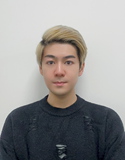蘇俊博士
- 基本信息
- 教育經(jīng)歷
- 工作經(jīng)歷
- 研究概述
- 發(fā)表文章

蘇俊 博士Chun So, Ph.D.Assistant Investigator, NIBS, BeijingEmail: sochun@nibs.ac.cn
教育經(jīng)歷 Education
2019年 德國哥廷根大學生物學(生物及復雜系統(tǒng)物理)博士
2019 Dr. rer. nat. (summa cum laude) in Biology (Physics of Biological and Complex Systems), Georg-August-Universit?t G?ttingen, G?ttingen, Germany2016年 香港中文大學細胞及分子生物學理學學士
2016 B.Sc. (1st hon.) in Cell and Molecular Biology, The Chinese University of Hong Kong, Hong Kong SAR
工作經(jīng)歷 Professional Experience
2022年– 北京生命科學研究所研究員
2022 – Present Assistant Investigator, National Institute of Biological Sciences, Beijing, China2019 – 2022年 德國馬克斯普朗克多學科科學研究所馬普裘槎博士后研究員
2019 – 2022 Max Planck Croucher Postdoctoral Fellow, Max Planck Institute for Multidisciplinary Sciences, G?ttingen, Germany
研究概述 Research Description
女性生殖健康是當今社會面臨人口老化的重要焦點之一。卵子和胚胎發(fā)育異常是造成女性不育、流產(chǎn)或唐氏綜合癥等遺傳疾病的主要成因。過往我們在卵母細胞發(fā)育成卵子的減數(shù)分裂過程中取得了多項開創(chuàng)性的發(fā)現(xiàn),包括哺乳動物卵母細胞組裝紡錘體的生物物理機制和人類卵母細胞組裝不穩(wěn)定的紡錘體從而錯誤地分離染色體的分子機制。
第一,我們發(fā)現(xiàn)了哺乳動物卵母細胞利用中心體蛋白組裝無中心體紡錘體的機制(So and Seres et al. Science 2019)。哺乳動物卵母細胞在無中心體的前提下依然表達了多個中心體蛋白。這些中心體蛋白透過一個名為液液相分離的生物物理現(xiàn)象,在減數(shù)分裂的過程中形成了過往未被報導過的液狀紡錘體結構域。液狀紡錘體結構域在紡錘體微管附近收納并調動微管調控因子,從而在無中心體下促進紡錘體組裝。
第二,我們揭示了人類卵母細胞紡錘極組裝和不穩(wěn)定性的機制(So et al. Science 2022)。在無中心體的前提下,人類和其他哺乳動物的卵母細胞同樣透過NUMA招募動力蛋白到微管負端來聚焦紡錘極。然而,除了人類以外,其他哺乳動物的卵母細胞并沒有組裝不穩(wěn)定的紡錘體。利用反向遺傳學篩選,我們鑒定出紡錘體穩(wěn)定性取決于一個名為KIFC1的負端定向驅動蛋白。哺乳動物的卵母細胞大多高度表達KIFC1,唯獨人類卵母細胞缺乏KIFC1。通過引入外源的KIFC1蛋白,我們成功的提高了人類卵母細胞組裝紡錘體和分離染色體的準確性,首次為防治卵子染色體數(shù)目異常帶來了可能。
未來我們實驗室會繼續(xù)利用不同的哺乳動物模型,結合國際領先的光電鏡(如光片活細胞成像,擴展成像、組織透明化成像、大體積電鏡)、功能喪失(如Trim-Away;Clift and So et al. Nat. Protoc. 2018)、生物物理(如力生物學測量、建模)等技術,探索卵子和胚胎發(fā)育的機制。我們的研究成果將為女性不育的成因和防治提供新方向,并改善現(xiàn)有的醫(yī)學輔助生殖技術。
Focusing on female reproductive health is a key way of dealing with population aging. Abnormal egg and embryo development are the leading causes of female infertility, miscarriage and genetic disorders such as Down Syndrome. Previously we have made several pioneering discoveries of the mechanisms underlying meiotic maturation of oocytes into eggs, such as the biophysical mechanism underlying spindle assembly in mammalian oocytes and the molecular mechanism underlying spindle instability and chromosome missegregation in human oocytes.
First, we discovered how mammalian oocytes utilize centrosomal proteins to assemble acentrosomal spindles (So and Seres et al. Science 2019). Mammalian oocytes express many centrosomal proteins despite the absence of centrosomes. During female meiosis, some of these proteins undergo a biophysical phenomenon known as liquid-liquid phase separation to form a previously undescribed domain, which we termed the liquid-like meiotic spindle domain (LISD). The LISD sequesters and mobilizes centrosomal proteins with microtubule regulatory functions in proximity to spindle microtubules, thus promoting spindle assembly in the absence of centrosomes.
Second, we uncovered how are spindle poles organized and why are they unstable in human oocytes (So et al. Science 2022). Human and other mammalian oocytes similarly utilize NUMA to recruit dynein to microtubule minus-ends for the focusing of acentrosomal spindle poles. However, unlike human oocytes, other mammalian oocytes do not assemble unstable spindles. Using a reverse genetic screen, we identified the minus-end-directed kinesin KIFC1 as a key determinant of meiotic spindle stability. While KIFC1 is readily expressed in most mammalian oocytes, it is deficient in human oocytes. By introducing exogenous KIFC1, we successfully increased the fidelity of spindle assembly and chromosome segregation in human oocytes. For the first time, we proposed a potential therapeutic method for reducing the risk of aneuploidy in human eggs.
With our expertise in cutting-edge light and electron microscopy and the support from the 13 core facilities at NIBS, we will continue adopting a cross-disciplinary approach to illuminate novel cellular, molecular and biophysical mechanisms underlying egg and embryo development across different mammalian models.. Our findings will provide novel insights into the causes and treatments of female infertility, and improve the existing assisted reproductive technologies.
發(fā)表文章 Publications
(*Equal contribution)
10. So, C., Menelaou, M., Uraji, J., Harasimov, K., Steyer, A.M., Seres, K.B., Bucevi?ius, J., Lukinavi?ius, G., M?bius, W., Sibold, C., Tandler-Schneider, A., Eckel, H., Moltrecht, R., Blayney, M., Elder, K., Schuh, M. “Mechanism of spindle pole organization and instability in human oocytes” Science (2022); Feb; 375(6581):eabj3944
- Covered by Nat. Cell Biol. in “Spindle instability in human oocytes”
- Highlighted by J. Assist. Reprod. Genet. in “Failure to focus seems to be a hominid thing”
9. So, C.*, Cheng, S.*, Schuh, M. “Phase separation during germline development” Trends Cell Biol. (2021); Apr; 31(4):254-268
8. Chan, Y.W.*, So, C.*, Yau, K.L., Chiu, K.C., Wang, X., Chan, F.L., Tsang, S.Y. “Adipose-derived stem cells and cancer cells fuse to generate cancer stem cell-like cells with increased tumorigenicity” J. Cell Physiol. (2020); Oct; 235(10):6794-6807
7. So, C.*, Seres, K.B.*, Steyer, A.M., M?nnich, E., Clift, D., Pejkovska, A., M?bius, W., Schuh, M. “A liquid-like spindle domain promotes acentrosomal spindle assembly in mammalian oocytes” Science (2019); Jun; 364(6447):eaat9557
- Recommended by F1000Prime
- Highlighted by J. Assist. Reprod. Genet. in “Phase transitions in human ARTs: fertility preservation comes of age”
6. Xu, Y., So, C., Lam, H.M., Fung, M.C., Tsang, S.Y. “Flow cytometric detection of newly-formed breast cancer stem cell-like cells after apoptosis reversal” J. Vis. Exp. (2019); Jan; (143)
5. Clift, D.*, So, C.*, McEwan, W.A., James, L.C., Schuh, M. “Acute and rapid degradation of endogenous proteins by Trim-Away” Nat. Protoc. (2018); Oct; 13(10):2149-2175
4. Xu, Y., So, C., Lam, H.M., Fung, M.C., Tsang, S.Y. “Apoptosis reversal promotes cancer stem cell-like cell formation” Neoplasia (2018); Mar; 20(3):295-303
3. Yang, H., Buisson, S., Bossi, G., Wallace, Z., Hancock, G., So, C., Asfield, R., Vuidepot, A., Mahon, T., Molloy, P., Oates, J., Paston, S.J., Aleksic, M., Hassan, N.J., Jakobsen, B.K., Dorrell, L. “Elimination of latently HIV-infected cells from antiretroviral therapy-suppressed subjects by engineered immune-mobilizing T-cell receptors” Mol. Ther. (2016); Nov; 24(11):1913-1925
2. Lo, I.C., Chan, H.C., Qi, Z., Ng, K.L., So, C., Tsang, S.Y. “TRPV3 channel negatively regulates cell cycle progression and safeguards the pluripotency of embryonic stem cells” J. Cell Physiol. (2016); Feb; 231(2):403-413
1. Qi, Y., Qi, Z., Li, Z., Wong, C.K., So, C., Lo, I.C., Huang, Y., Yao, X., Tsang, S.Y. “Role of TRPV1 in the differentiation of mouse embryonic stem cells into cardiomyocytes” PLoS One (2015); Jul; 10(7):e0133211



